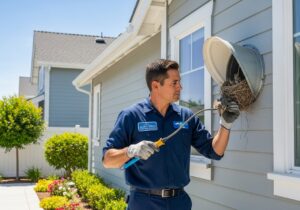
new home diy
Painting projects, whether small DIY efforts or large-scale renovations, require proper surface protection. Spilled paint, dust, and debris can damage flooring, furniture, and other valuable assets. That’s why choosing the right painters tarps is essential for home users and professionals alike. With the right tarp, you can maintain a clean workspace, ensure safety, and extend the life of your tools and surfaces.
Understanding which type of tarp to use depends on your project type, environment, and whether the tarp is for single or multiple uses. This guide explores the top five painter’s tarps for effective coverage and protection.
Importance of Using Quality Painter’s Tarps
Using high-quality tarps minimizes mess, reduces clean-up time, and protects valuable surfaces. In addition to preventing paint spills and dust accumulation, good tarps also offer:
-
Slip-resistant surfaces for safety
-
Absorption to prevent paint tracking
-
Reusability for long-term value
-
Ease of placement and storage
Investing in reliable tarps can save you money, time, and labor effort throughout your painting projects.
Factors to Consider Before Buying Painter’s Tarps
Before selecting a tarp, it’s helpful to consider factors that impact usability and effectiveness:
-
Material: Canvas, plastic, butyl rubber, and paper-backed fabric each serve different purposes
-
Size: Ensure the tarp covers the full area you’re painting or protecting
-
Weight: Heavier tarps stay in place but may be harder to handle
-
Absorbency: Essential for reducing slipping and paint transfer
-
Reusability: Canvas and rubber tarps offer repeated use, while plastic options are often disposable
Selecting the right tarp depends on your space, paint type, work frequency, and budget.
1. Canvas Painter’s Tarp – Best for Absorbency and Reusability
Canvas tarps are made of tightly woven cotton fabric. They’re one of the most commonly used materials in professional painting because of their high absorbency and durability.
Features:
-
Absorbs paint to prevent splatter spreading
-
Washable and reusable for multiple jobs
-
Heavy enough to stay in place without tape
-
Environmentally friendly material
-
Available in a wide range of sizes and thicknesses
Best Used For:
Interior professional painting projects, staircases, hardwood floors, and furniture protection where durability and reuse are essential.
2. Poly Plastic Tarp – Best for Waterproof Surface Protection
Plastic tarps, usually made from polyethylene, are waterproof and great for quick or messy projects. While they don’t absorb paint, they provide an excellent barrier for water-based paints and wet surfaces.
Features:
-
100% waterproof
-
Lightweight and flexible for easy handling
-
Disposable or reusable versions available
-
Economical and widely accessible
-
Good for covering large areas quickly
Best Used For:
Outdoor painting, covering furniture or floors during drywall sanding, and quick home improvement jobs where moisture resistance is key.
3. Butyl Rubber-Backed Tarp – Best for Slip Resistance and Safety
Butyl tarps are layered tarps designed for maximum durability and slip resistance. These are made with a canvas or fabric top and a rubberized, leak-proof backing.
Features:
-
Leak-proof and non-slip
-
Absorbs paint on top layer, blocks it on the underside
-
Heavy-duty design that stays in place
-
Ideal for hardwood, tile, or finished surfaces
-
Designed for long-term professional use
Best Used For:
High-traffic areas, commercial painting sites, and situations where safety and paint control are priorities.
4. Paper-Poly Drop Cloth – Best for Disposable Coverage and Lightweight Projects
Paper-backed poly tarps combine the benefits of absorbent paper and waterproof poly. These tarps are typically disposable and affordable, making them ideal for homeowners tackling small painting tasks.
Features:
-
Lightweight and cost-effective
-
Designed for single use
-
Protects against paint splatter and light spills
-
Easy to cut and customize
-
Good for horizontal surfaces
Best Used For:
Touch-ups, single-room painting, or temporary coverage when permanent tarps aren’t necessary.
5. Blended Fabric Tarp – Best for Indoor-Outdoor Versatility
Blended tarps use a mix of canvas, polyester, and plastic fibers to create a strong, absorbent, yet water-resistant material. They’re versatile, durable, and a solid choice for both homeowners and professionals.
Features:
-
Combines strength and water resistance
-
Resistant to wear and tear
-
Available in medium to heavy weights
-
Designed for repeat use with easy cleanup
-
Often comes with finished edges for durability
Best Used For:
Outdoor projects, commercial spaces, garage floors, or job sites with mixed-use applications.
Choosing the Right Size for Your Space
Size matters when using painters tarps. Undersized tarps lead to unprotected areas, while oversized ones can bunch up and cause tripping hazards.
Tips for Choosing the Right Size:
-
Measure the surface area before purchasing
-
Use multiple smaller tarps for multi-room projects
-
For furniture or appliances, choose fitted or elastic-edge options
-
Use extra length if you’re covering vertical surfaces like walls or windows
Selecting the correct size reduces waste and improves application efficiency.
Tips for Using Painters Tarps Effectively
To get the most value and protection from your tarp, follow best practices during setup and cleanup:
-
Always tape or anchor the corners to prevent slipping
-
Avoid walking on tarps with wet paint to reduce tracking
-
Clean reusable tarps immediately after use
-
Fold and store tarps in a dry space to prevent mildew
-
Keep separate tarps for oil-based and water-based paints
Proper usage not only extends the life of your tarp but also improves safety and cleanliness on the job.
Storage and Maintenance of Reusable Tarps
For canvas, rubber, and blended fabric tarps that are built to last, regular maintenance ensures long-term usability.
How to Maintain Your Tarps:
-
Shake off dry paint or debris before folding
-
Rinse with mild soap and water
-
Hang dry in a shaded area
-
Fold flat and store in plastic or cloth bags
-
Label tarps used for different jobs to avoid contamination
Reusable tarps are an investment, and with proper care, they can support multiple painting and renovation projects over time.
Matching Your Project to the Right Tarp Material
Every project is different. Choosing the right tarp ensures smoother workflows and a better finish.
Match by Task:
-
Walls and ceilings: Canvas or blended tarps
-
Floor protection: Butyl rubber-backed or plastic tarps
-
Outdoor painting: Plastic or blended fabric tarps
-
Quick jobs: Paper-poly tarps
-
Commercial work: Heavy-duty canvas or butyl tarps
Understanding your painting environment helps you make smarter, more cost-effective decisions.




